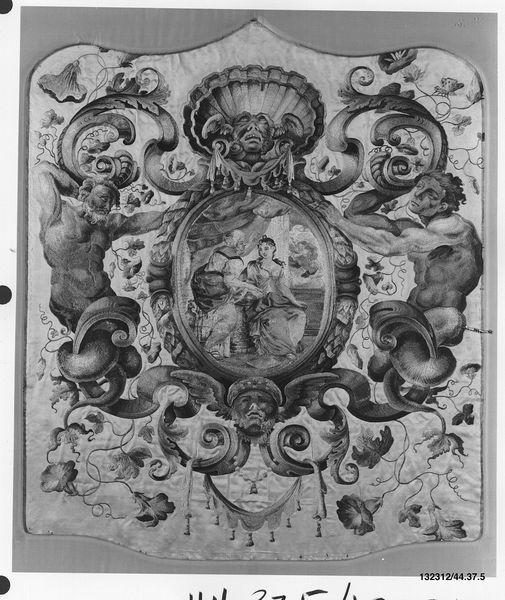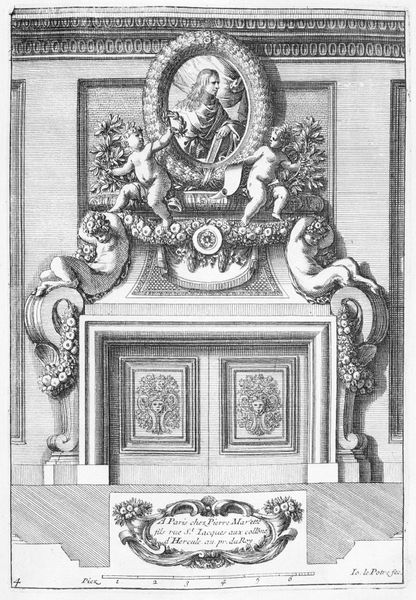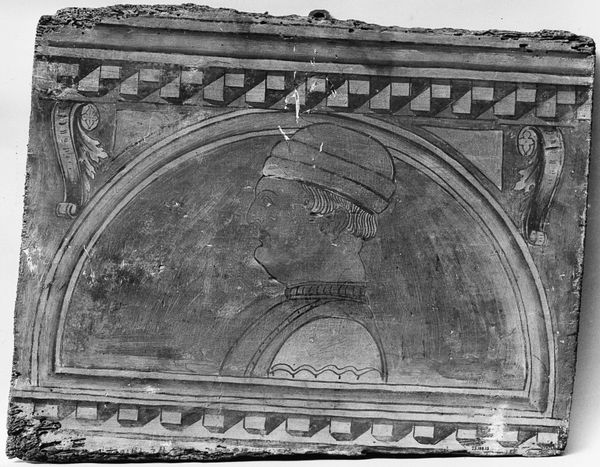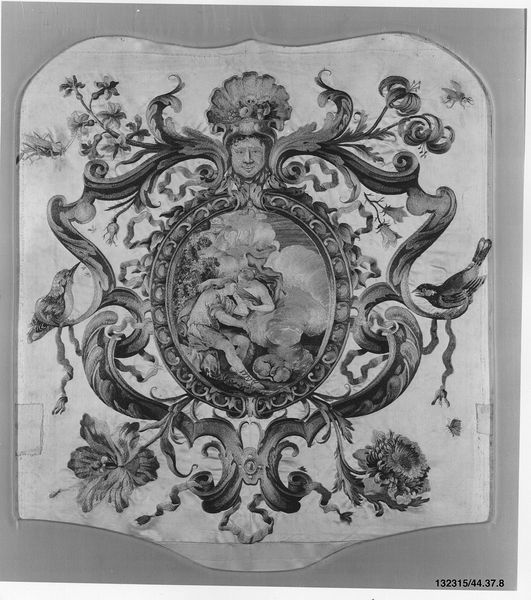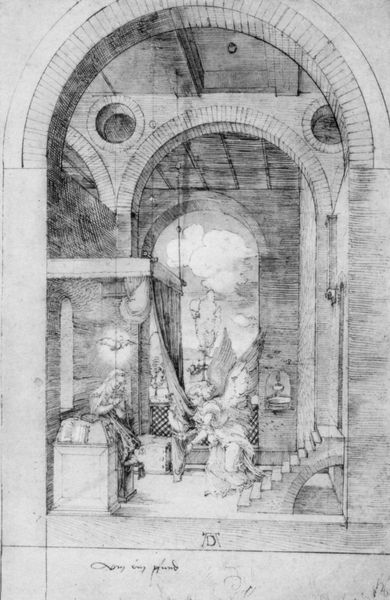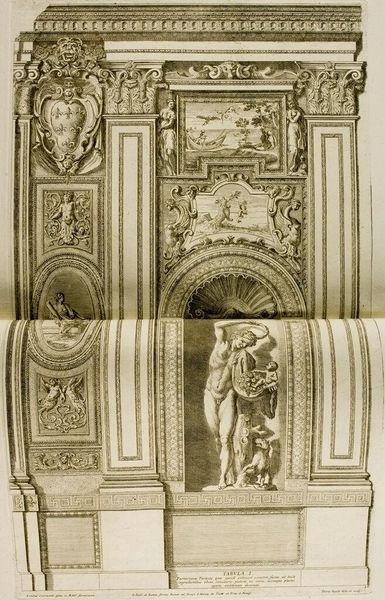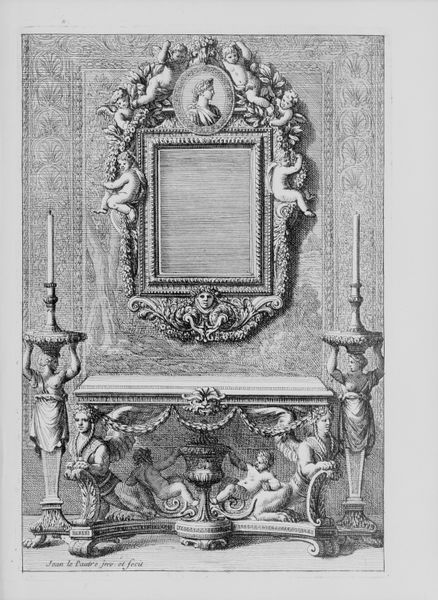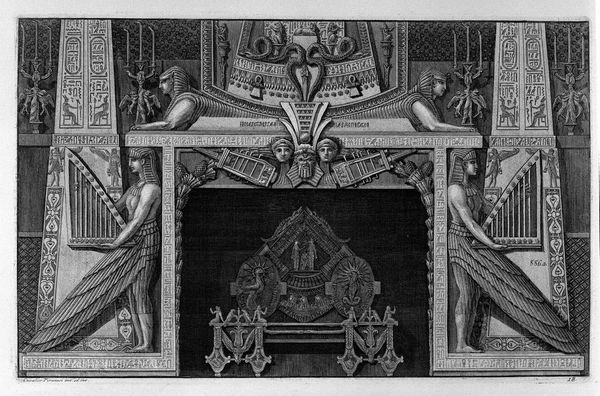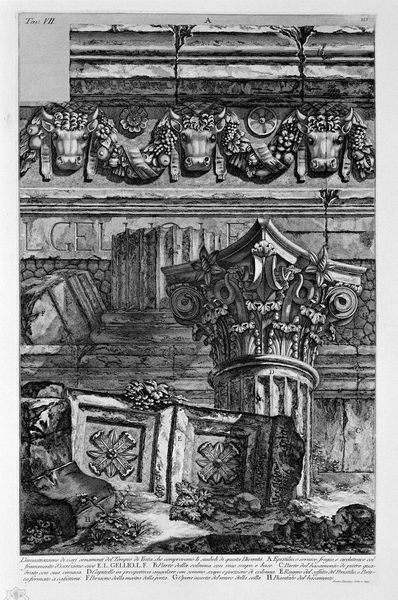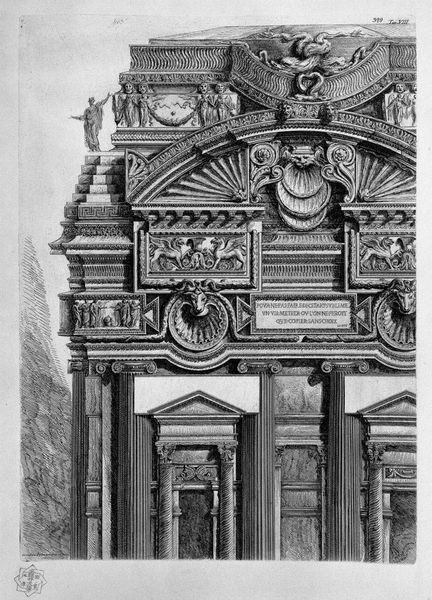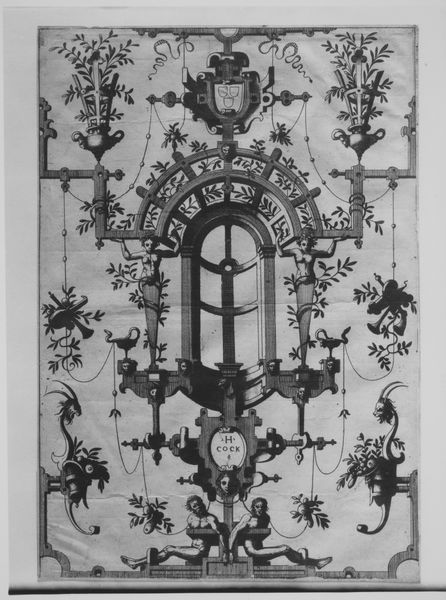
Ceiling decoration design of a hall in the Ujazdów Castle 1767
0:00
0:00
bernardobellotto
National Museum, Warsaw, Poland
Copyright: Public domain
Editor: So, this drawing is by Bernardo Bellotto, titled "Ceiling decoration design of a hall in the Ujazdów Castle" from 1767. The amount of detail crammed into one perspective is astounding. It's hard to tell that it's just a plan! What should viewers take away from it? Curator: Well, consider Ujazdów Castle's role. Royal patronage drove its design, influencing Bellotto’s concepts. Notice how the proposed decorations echo absolutist power – allegorical figures, displays of wealth, idealized histories. It's a vision for how architecture could communicate specific socio-political messages. Editor: That makes sense. So it’s not just about beauty but also conveying a message? Who would "get" this message, besides the royalty themselves? Curator: Exactly. The artistic program in palaces like this was understood by a restricted audience: visiting dignitaries, members of the court, educated elites. It projected power to those ‘in the know,’ reinforcing existing social hierarchies through visual spectacle and reinforcing a social pecking order. How effective do you think such imagery would be today? Editor: Hmm, I imagine the impact would be lessened now that those symbols are, well, history, and a little less direct? Curator: Perhaps, but the core principle of art communicating power remains relevant. Consider modern architecture funded by corporations – what messages do those structures project? Editor: So even today, buildings tell a story about who’s in charge. That’s interesting to consider when visiting buildings. Thank you. Curator: A pleasure. Keep thinking critically about the spaces around you, and the messages they carry!
Comments
No comments
Be the first to comment and join the conversation on the ultimate creative platform.
